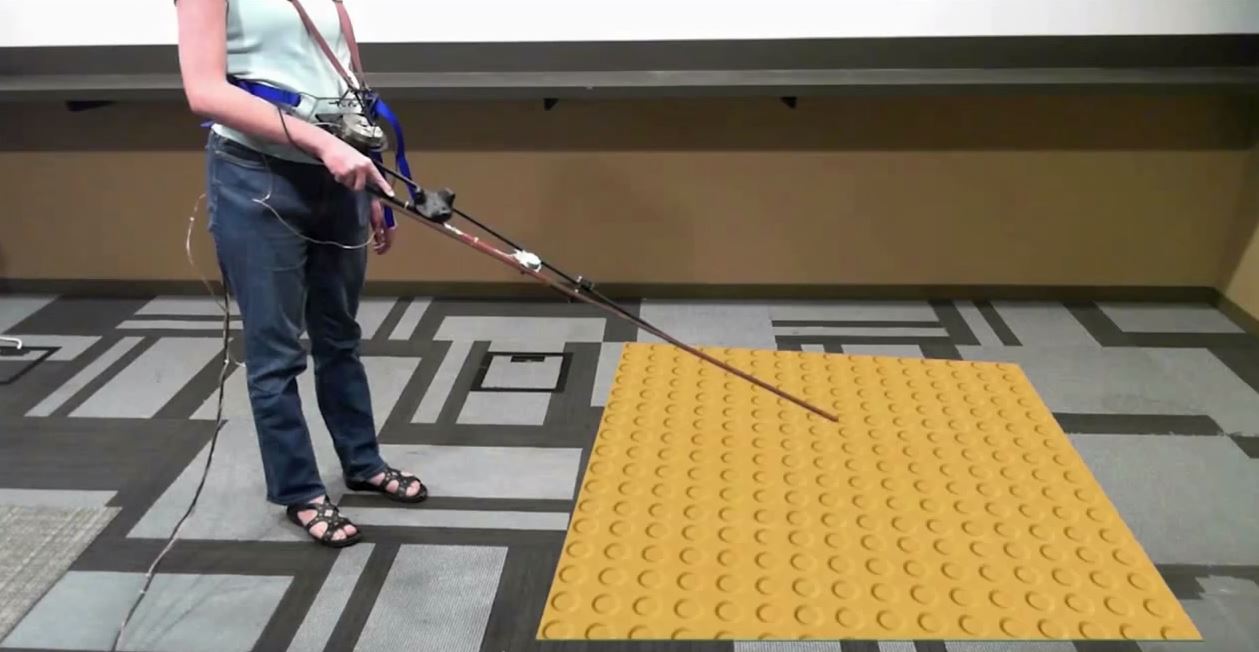Microsoft researchers develop VR 'canetroller' for the visually impaired
Microsoft is working to make VR more accessible to the visually impaired with one of its latest research projects.

VR is traditionally thought of as an immersive visual medium, but Microsoft Research has developed a novel way to give visually impaired users a way to interact with VR as well. As spotted by The Next Web, researchers at Microsoft recently what they call the "canetroller," a device that uses haptic feedback to help the visually impaired navigate a virtual environment.
According to Microsoft, the canetroller simulates the experience of using a white cane in the real world, only in VR. Working with an HTC Vive headset, visually impaired users can use the canetroller translate the white cane skills they've already acquired to participate in VR experiences.
The canetroller operates based on three different types of feedback. The first is that a brake mechanism can physically impede the controller to provide physical resistance when the cane contacts a virtual object. Next, the cane can provide "vibrotactile feedback" to simulate vibrations when the cane hits an object or is dragged scross surfaces. Lastly, the cane can simulate the sound of real-world use with 3D auditory feedback.
The project is still a work in progress and will require further refinement, but it shows promise, particularly in helping to individuals with visual impairments learn to travel confidently through various environments. According to the researchers, orientation and mobility instructors saw the canetroller as a particularly useful tool for helping individuals practice crossing busy streets.
It can be used with students who might be nervous about crossing a particular busy street. Let's try it this way first… without having the risk of hitting by [a] car.
Microsoft's efforts on accessibility and inclusion have recently garnered increased attention, and the company even recently received the Helen Keller award from the American Foundation for the Blind. It's interesting to see researchers pushing forward to make such a traditionally visual medium more accessible, and it will be interesting to see what potential the canetroller may have as it is refined further.
All the latest news, reviews, and guides for Windows and Xbox diehards.

Dan Thorp-Lancaster is the former Editor-in-Chief of Windows Central. He began working with Windows Central, Android Central, and iMore as a news writer in 2014 and is obsessed with tech of all sorts. You can follow Dan on Twitter @DthorpL and Instagram @heyitsdtl.

